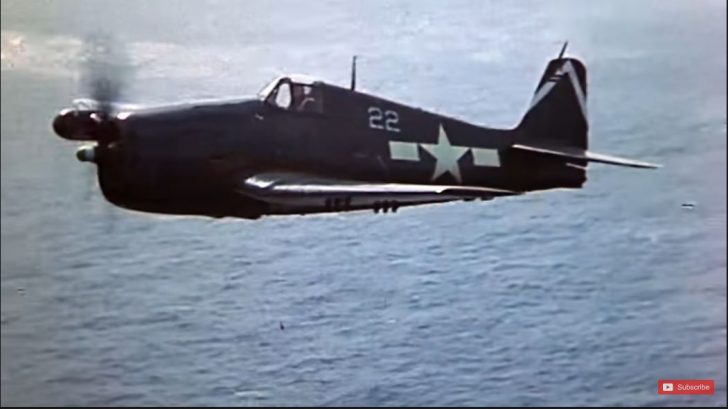The Grumman Hellcat is a carrier-based fighter aircraft that became one of the most legendary fighters in World War II history.
This well-designed carrier fighter was designed to take down Japan’s daunting Mitsubishi A6M Zero. It’s powered by a 2,000 hp Pratt & Whitney R-2800 Double Wasp, yet it still resembled the earlier Wildcat in many ways.
Here are the five reasons why the Wildcat was the unsung hero of the Pacific:
1. Two Grumman F6F Hellcats shot down 15 Japanese planes in the Battle of Leyte Gulf
On October 24, 1944, Captain David McCampbell was able to destroy 9 enemy planes, while his wingman, Ens. Roy Rushing managed to take down 6. He did this by flying at high altitude, giving him a significant advantage. He had a view of the Japanese formation and guaranteed he had the first shot. He took out planes and climbed up again, coordinating with his wingman attack after attack.
McCampbell and six other pilots successfully thwarted the surprise attack 60 Japanese warplanes that threatened US ships. It also earned McCampbell the “Medal of Honor” for his bravery.
2. It played a key role in the European Theater Of Operations
The British government bought around 1,000 units of Hellcats, calling them the Grumman Markets.
They were first used in combat in April 1944, attacking the German battleship Tirpitz. Although the attack didn’t sink the battleship entirely, the Royal Air Force Lancaster bombers finished the job, and the Hellcats helped keep her out of commission.
3. It managed to outperform the famous Japanese Mitsubishi A6M Zero
In July 1942, the navy found a crashed and abandoned Japanese Mitsubishi A6M Zero in Alaskan territory. This became a goldmine- the US army had it examined and looked for the aircraft’s weaknesses.
By then, Grumman had been modifying the earlier Wildcat, making it superior enough to take on the A6M Zero. Throughout the war, the Hellcat had achieved a whopping 19:1 kill ratio, taking down 5,156 enemy aircraft in just two years.
4. Took part in the Battle of the Philippine Sea, dubbed the “Marianas Turkey Shoot”
During the Battle of the Philippine Sea, the Hellcat proved to be the master of the skies. It took down approximately 300 Japanese aircraft and ended Japan’s ability to be an efficient striking force.
The Hellcat can take down Japanese planes with incredible ease. After a day of combat, one of the pilots said, “It’s just like an old-time turkey shoot,” earning its nickname as the Great Mariana’s Turkey Shoot.
5. The Hellcat continued to fight even until the last moments of the war
Hellcats are said to have dropped the last bombs of war. A fighter bomber squadron had been flying over Japan dropped bombs. After pulling out, he heard the radio call to stop all attacks as Japan had surrendered.
There’s no doubt that the Hellcat’s ruggedness, agility, and sheer fighter power gave the United States the badly needed victory to win the war over Japan. This fatal feline in the sky also proved itself as a force to be reckoned with during World War II.



